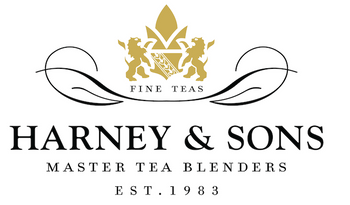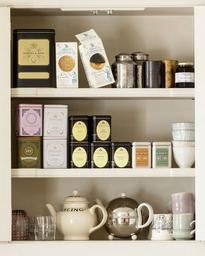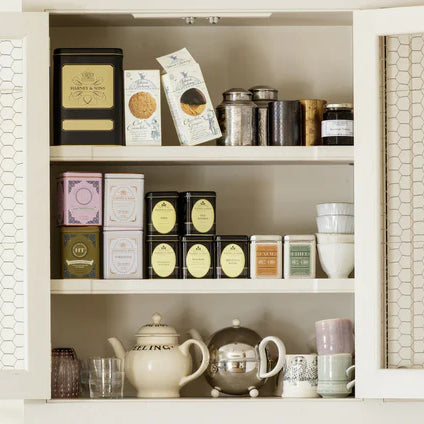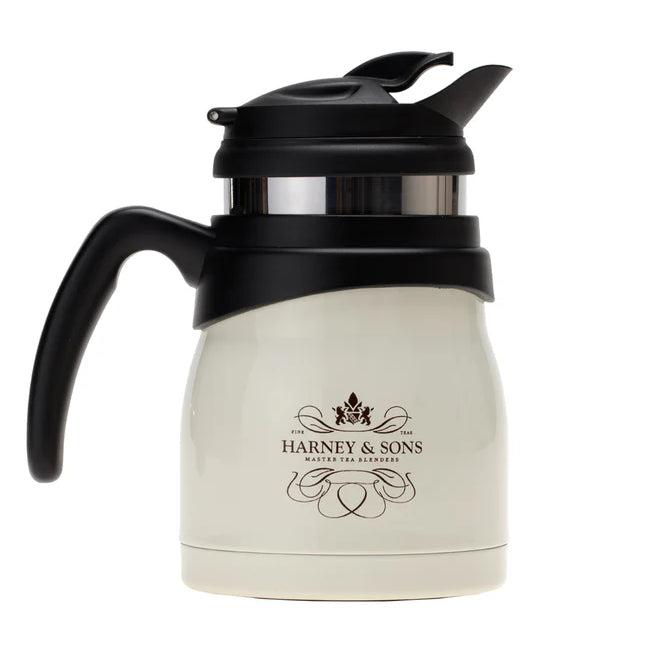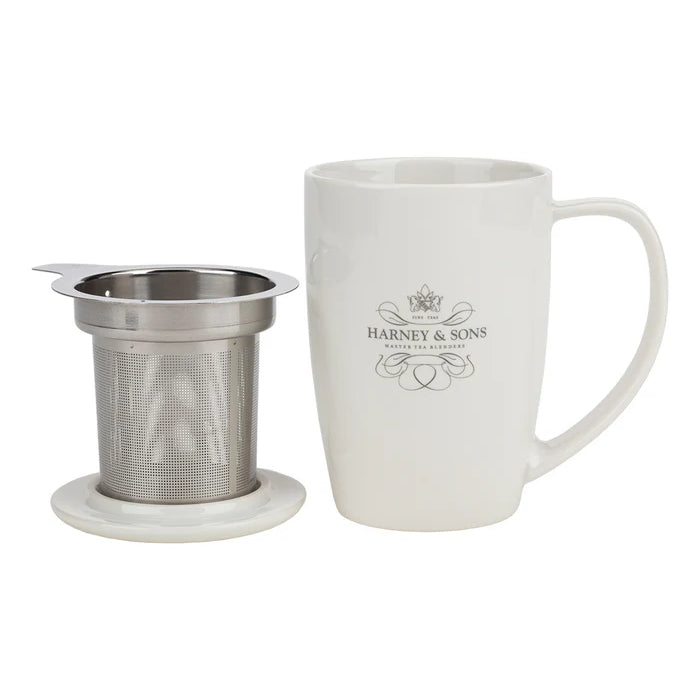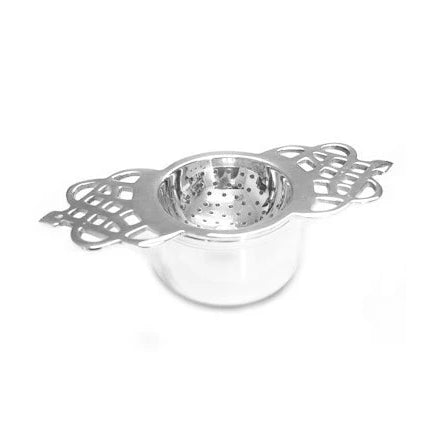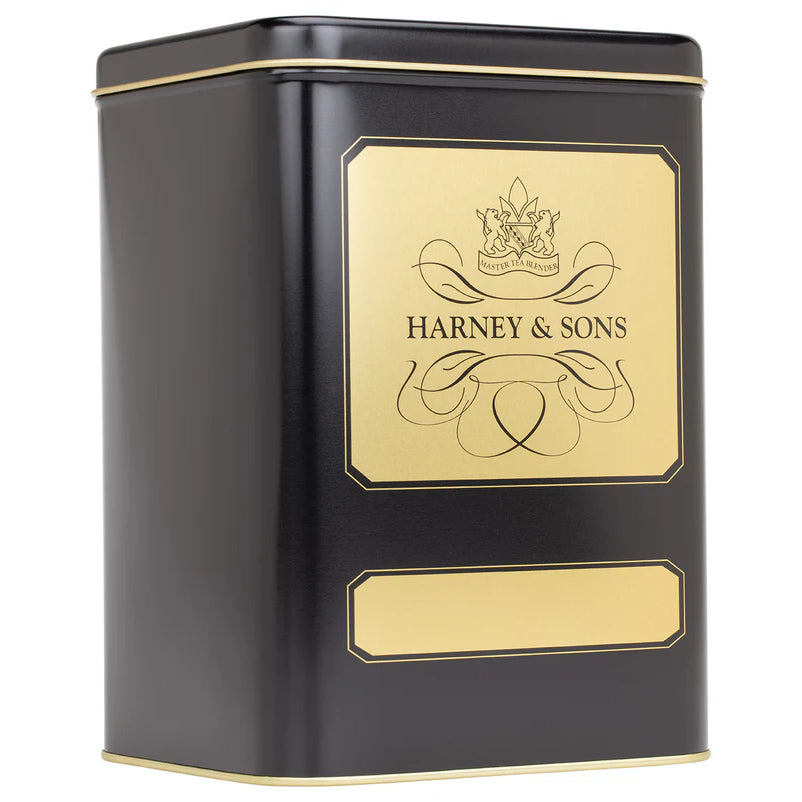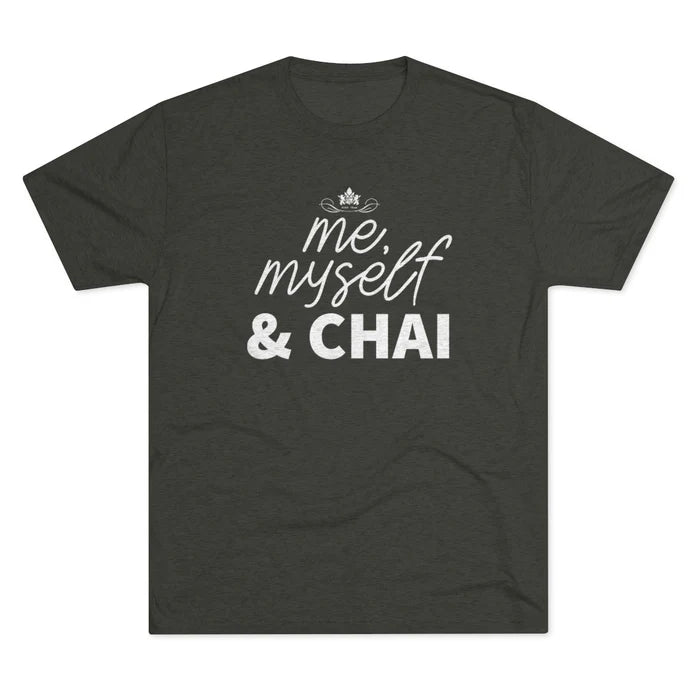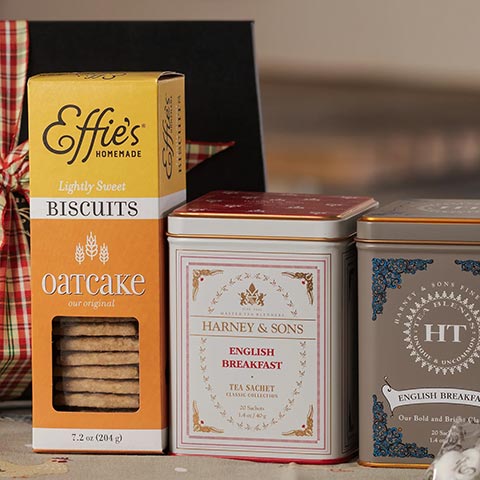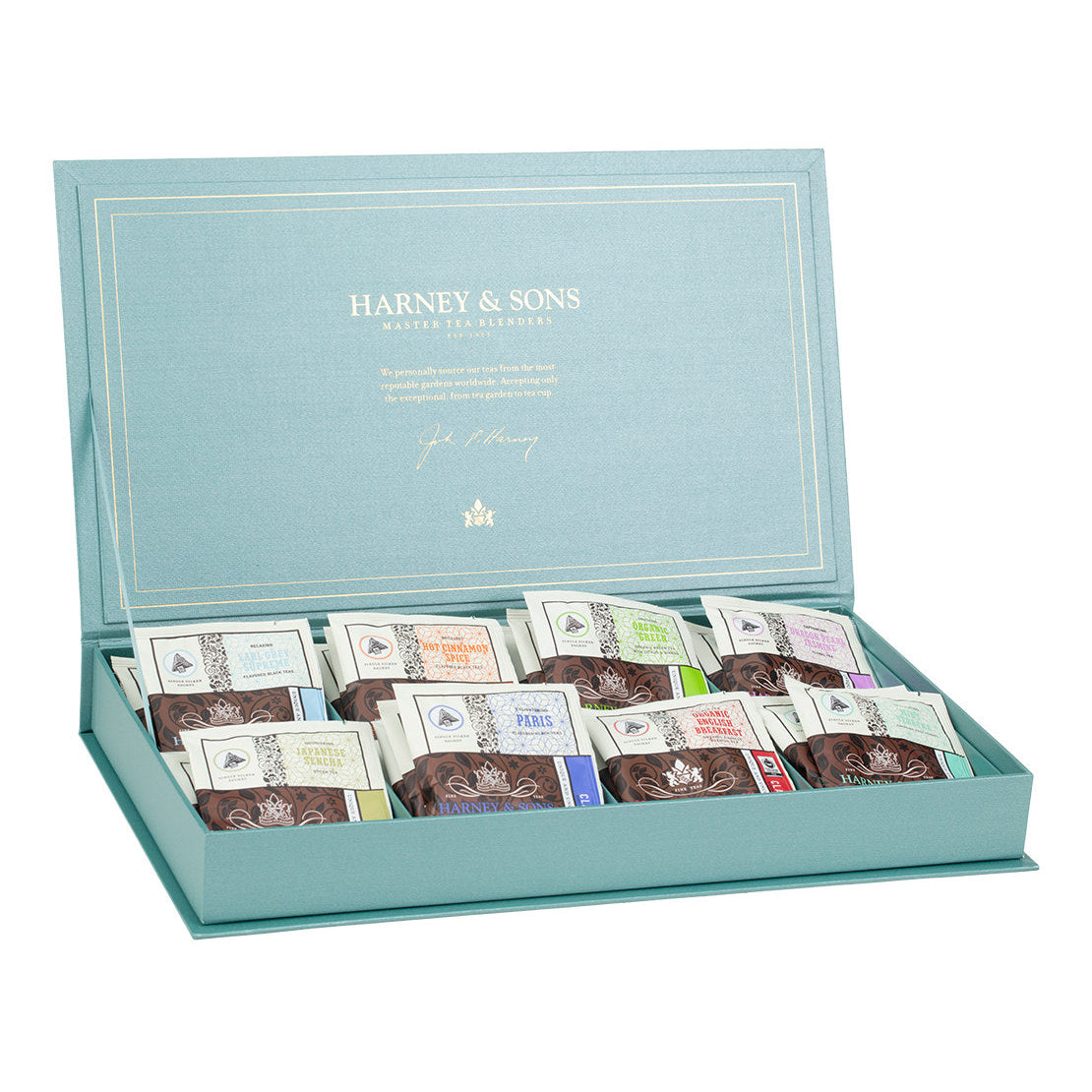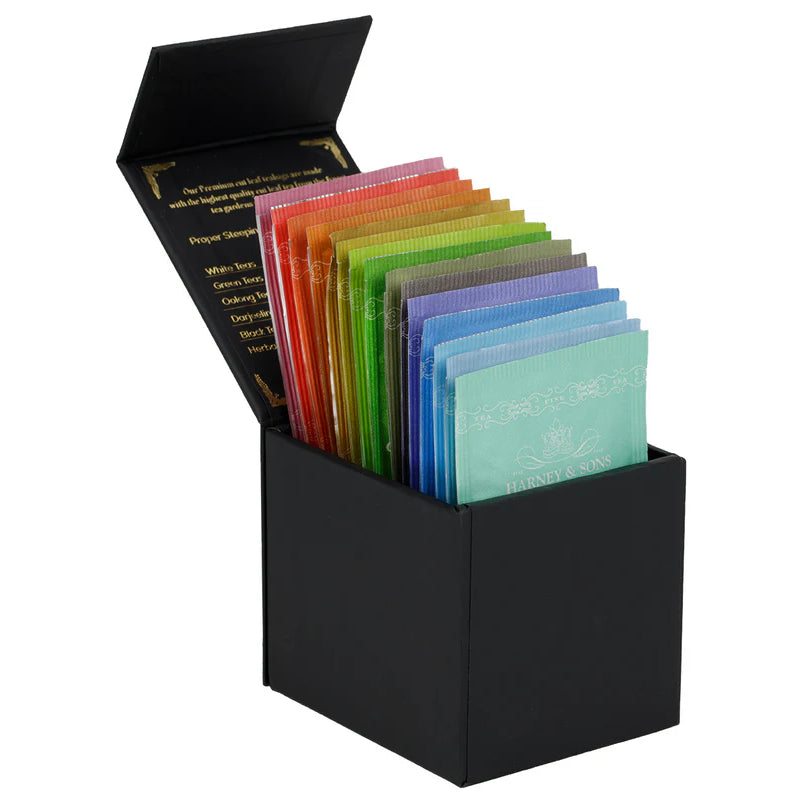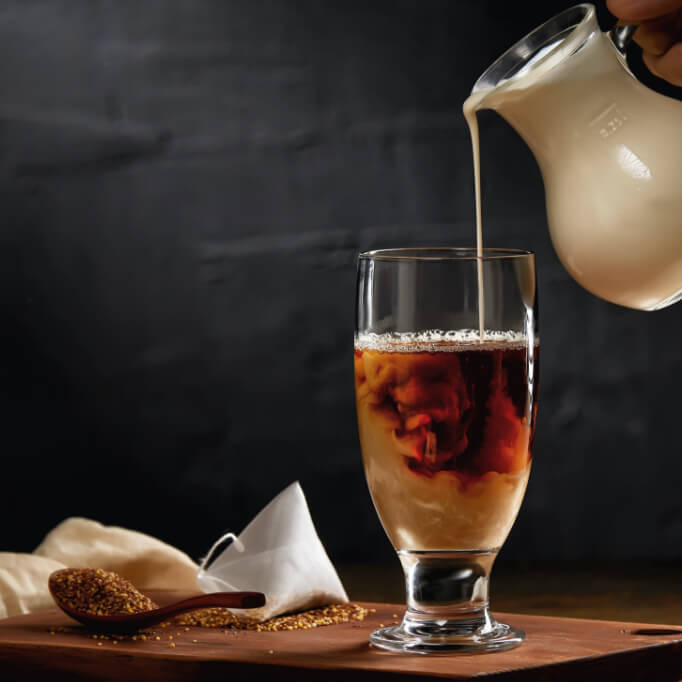Everything You Want to Know about Black Tea

Black tea is so ubiquitous, it’s likely to have been the first tea most people ever had. So you probably think, “Black tea, it’s all the same -- and it’s just regular tea, right? Nothing special.” We hate to break it to you, but black teas are actually very interesting, and there may be more to learn about black tea than you think. Discover what you may not know about that black tea you’ve been drinking and taking for granted most of your life.
What Exactly Is Black Tea?
While black teas are made from the same Camellia sinensis plant as all teas, black teas are oxidized rather than fermented. The lengthier oxidation process causes the tea leaves to develop into dark brown and black colors.
Black teas range from mellow teas from China to full-bodied teas from Assam, India. Because of those fuller-bodied properties, they are often enjoyed with milk and sugar, although that is completely up to personal preference (and is often the subject of heated debate!).
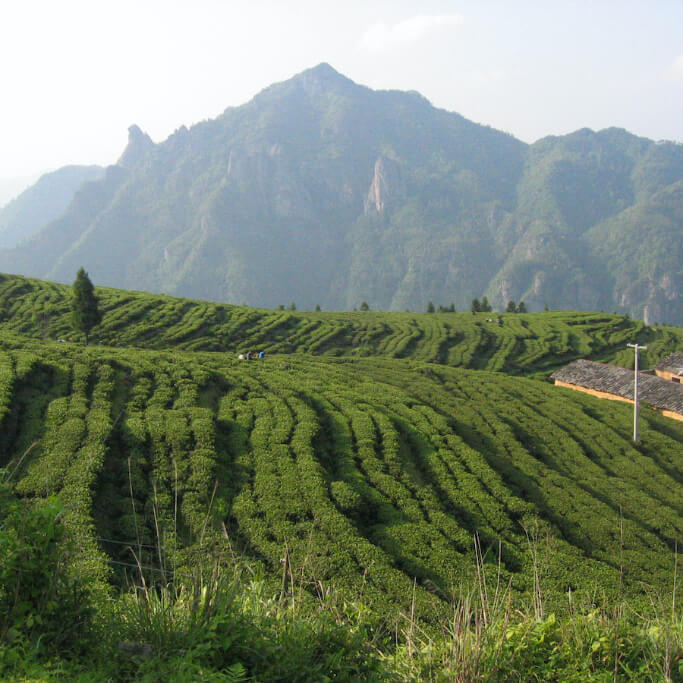
How Is Black Tea Made?
Premium black teas are withered, rolled, oxidized, and fired in an oven, creating a warm and toasty flavor. They are oxidized very, very slowly, creating chemical compounds that result in a mild, soft brew. After harvesting the tea leaves, black tea makers do not fix their teas to preserve the green chlorophyll as green tea makers do. Instead, they allow the leaves to darken. The same reaction causes avocados and bananas to brown when their flesh is cut open and exposed to the air. During oxidation in tea, an enzyme in the leaves reacts with oxygen to create new brown-colored compounds called “flavonoids.”
The level of flavonoids not only determines the tea’s color, but they also influence its flavors and body. As oxidation begins, the first flavonoid to emerge is called “theaflavin,” which makes the tea golden but also quite brisk and puckery. If oxidation continues, milder flavonoids called “thearubigins” emerge and give the tea a rounded, gentler body and a darker brown color. The slower the oxidation, the more thearubigins, the mellower the tea.

In Mike Harney’s book, The Harney & Sons Guide to Tea, Mike discusses two categories of black tea: Chinese Black Teas and British Legacy Teas, those originating from Britain’s tea plantations in India and Sri Lanka. In short, Chinese black teas consist mostly of thearubigins, since Chinese tea makers slow down oxidation as much as possible.
First, they roll the leaves very gently, keeping the leaves as whole as possible. Macerating the leaves only very lightly slows down oxidation by preventing the enzymes from breaking out of the leaf cells into the air. Then the tea makers pack the leaves into deep, finely woven bamboo baskets that limit access to oxygen. The leaves remain in the baskets for several hours, where they oxidize very slowly. Loaded up with thearubigins, the teas taste delightfully rounded and gentle.
Black tea was exclusively a Chinese product until the mid-19th century when the British began to grow their own tea in their colonies of India and Sri Lanka. These new tea gardens employed industrialized methods to make a remarkably brisk, uniform drink. They accomplish this through the use of mechanical rolling machines, unlike the hand-rolling methods employed by the Chinese. British Legacy Teas look uncannily alike due to being formed on identical rolling machines, while Chinese teas are made using a variety of machines in myriad ways to create a panoply of shapes and flavors.
While the highest grade of black teas is processed using what is called the “orthodox” method of oxidizing the whole tea leaf, another method used is CTC which stands for crush-tear-curl (or sometimes called cut-tear-curl). The CTC process is far less time-consuming than the orthodox method, which means the tea is less expensive (and generally not considered premium). CTC teas are very popular in India, primarily due to cost, and are widely used for chai tea. For more on this method of production, read our CTC blog.
Where Does Black Tea Come From?
Once black tea made its way out of China, it is now grown around the world. We source our black teas from tea gardens in places you’d expect: various parts of China, Assam, Ceylon, and the Darjeeling region, as well as places you might not expect, like Africa, Indonesia, Vietnam, and Colombia.
The level of flavonoids not only determines the tea’s color, but they also influence its flavors and body. As oxidation begins, the first flavonoid to emerge is called “theaflavin,” which makes the tea golden but also quite brisk and puckery. If oxidation continues, milder flavonoids called “thearubigins” emerge and give the tea a rounded, gentler body and a darker brown color. The slower the oxidation, the more thearubigins, the mellower the tea.

How Does Black Tea Taste?
The flavor of black teas really runs the gamut. They can range from malty or smoky to fruity and sweet. Black teas range from mellow teas from China to full-bodied teas from Assam, India. There are malty teas, smoky teas and fruity teas, earthy teas, and honeyed teas. See the section below to dive more fully into the vast world of black teas.
Types of Black Tea
At Harney & Sons, we carry a vast array of black teas from around the world. We have placed them into eight different categories for you to explore:
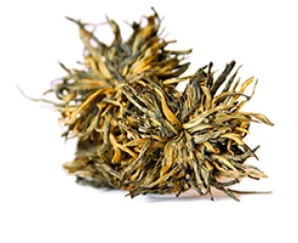
Tea started in China, thus China has a large variety of black teas. From the honey twinge of Golden Monkey and the Panyang teas to the chocolate of Keemuns and the turgid smokiness of Lapsang Souchong, these teas have a range and character all their own.
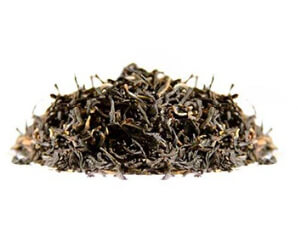
Assam is India's largest producer of tea, and the broad flood plains make for some of the most fertile tea estates in the world.
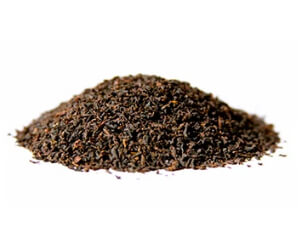
Ceylon teas can brew up light and bright like Lover's Leap, or substantial like Kenilworth Garden. Ceylons make perfect afternoon teas and can handle milk and sugar.
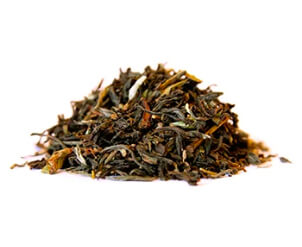
The light and brisk First Flush teas focus your attention. While the darker teas of the later seasons are more mellow and often have wonderful flavors.
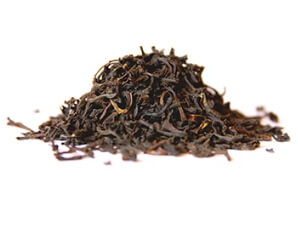
Nowadays tea is coming from more than the "Usual Suspects." Explore these teas from Africa, Indonesia, Southern India, and Vietnam.
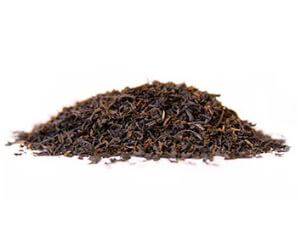
Since 1983 we have worked to create fine tea blends, each one with a story all its own.
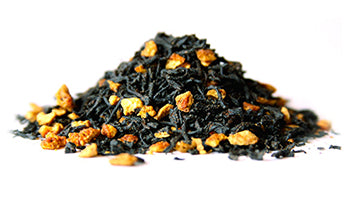
Our flavored teas are some of the most popular teas we carry, at all times of the year. Everyone just loves the way that our smooth flavors meld with the background taste of tea.

Relax and enjoy these favorite decaf black teas anytime. Though they've had their caffeine removed, their full flavor remains.
Here are just a handful of classic black teas we carry. If you’ve tried them, you know why they’re classic. If not, here’s your chance!
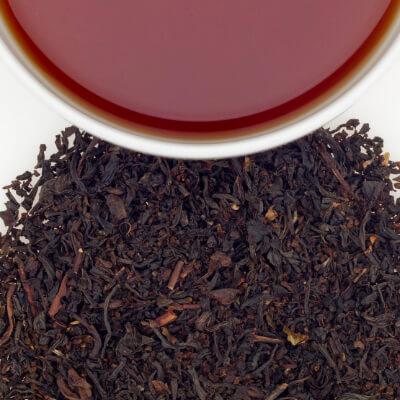
This tea is perhaps the most famous black tea in the world, originally inspired by the British Prime Minister, Earl Grey. There are as many different versions of Earl Grey as there are tea companies. Our popular blend uses teas from India and China, blended with natural oil of bergamot.
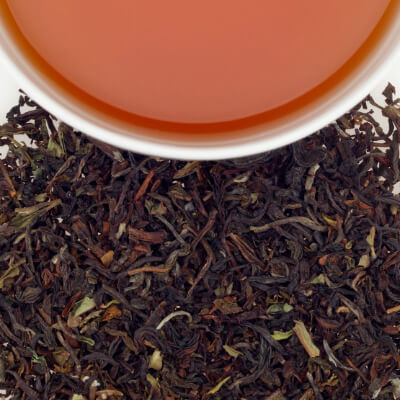
High in the mountains, deep in the mists that surround the Himalayas is Darjeeling, "Queen of Teas." Our Darjeeling tea is a blend of First Flush and Autumnal teas from the best gardens. This mixture yields a light color in the cup and a fragrant nose.
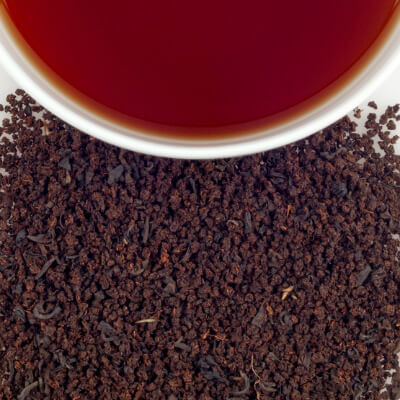
Scottish Morn is a strong black tea, perhaps our very strongest. When you stand up your spoon in this tea, it might just stand straight. Many Scots would lighten it with milk. Or not.
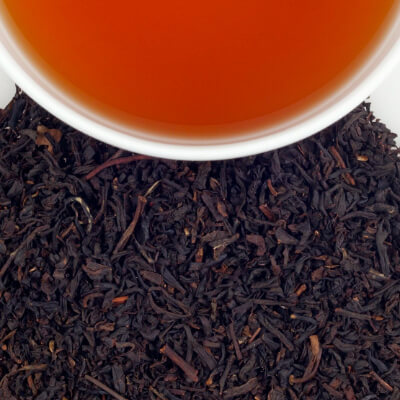
Mike Harney has enjoyed many a pot of tea in the famous Parisian tea shops. In homage to the city, he created what's become one of Harney & Sons' most popular and beloved blends worldwide. Paris is a fruity black tea with vanilla and caramel flavors, and a hint of lemony Bergamot. The aroma is delightful!
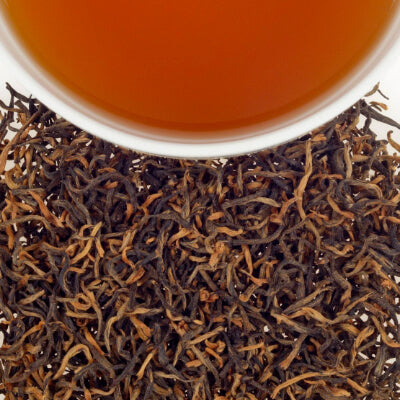
Golden Monkey tea comes from the north in China's Fujian province. It features large black tea leaves interspersed with golden tips. It produces a lightly sweet, and “round” cup of tea with a nice level of complexity. You'll enjoy the hints of apricot, nuts and rose.
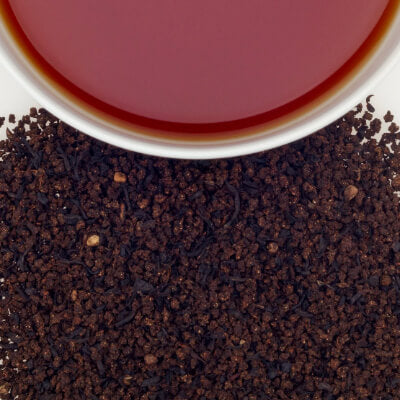
To help you make the delightful Indian beverage of Chai, we created this blend. It is strong and definitely spicy, although we do not add the peppers found in many Indian Chai recipes. Just add the milk and sugar you think is correct. It may also be drunk on its own. This blend features black tea from India, cardamom seeds, cinnamon, nutmeg, cloves, and natural cardamom and vanilla flavors.
How Much Caffeine Is in Black Tea?
It is quite difficult to gauge how much caffeine is in a cup of tea because it depends on so many factors: the tea itself, how much is used in a cup, and how long it is brewed. In general, however, black tea contains less caffeine than a cup of coffee and runs in the middle of the pack when it comes to caffeine in various types of tea.
During the brewing process, there are ways to mitigate the amount of caffeine in your cup of black tea.
*While these caffeine levels hold true generally, caffeine in tea varies from plant to plant and within tea types.
To Keep Caffeine Low, Consider the Following:
- Brew your tea properly with the correct amount of water, temperature and brew time.
- Use loose leaf tea. Teabags tend to contain smaller, cut leaves resulting in a faster caffeine extraction.
- Obviously, you can cut your caffeine consumption by drinking a decaf black tea.
To keep the whole world happy, we offer our wildly popular Hot Cinnamon Spice Tea in a decaf version.
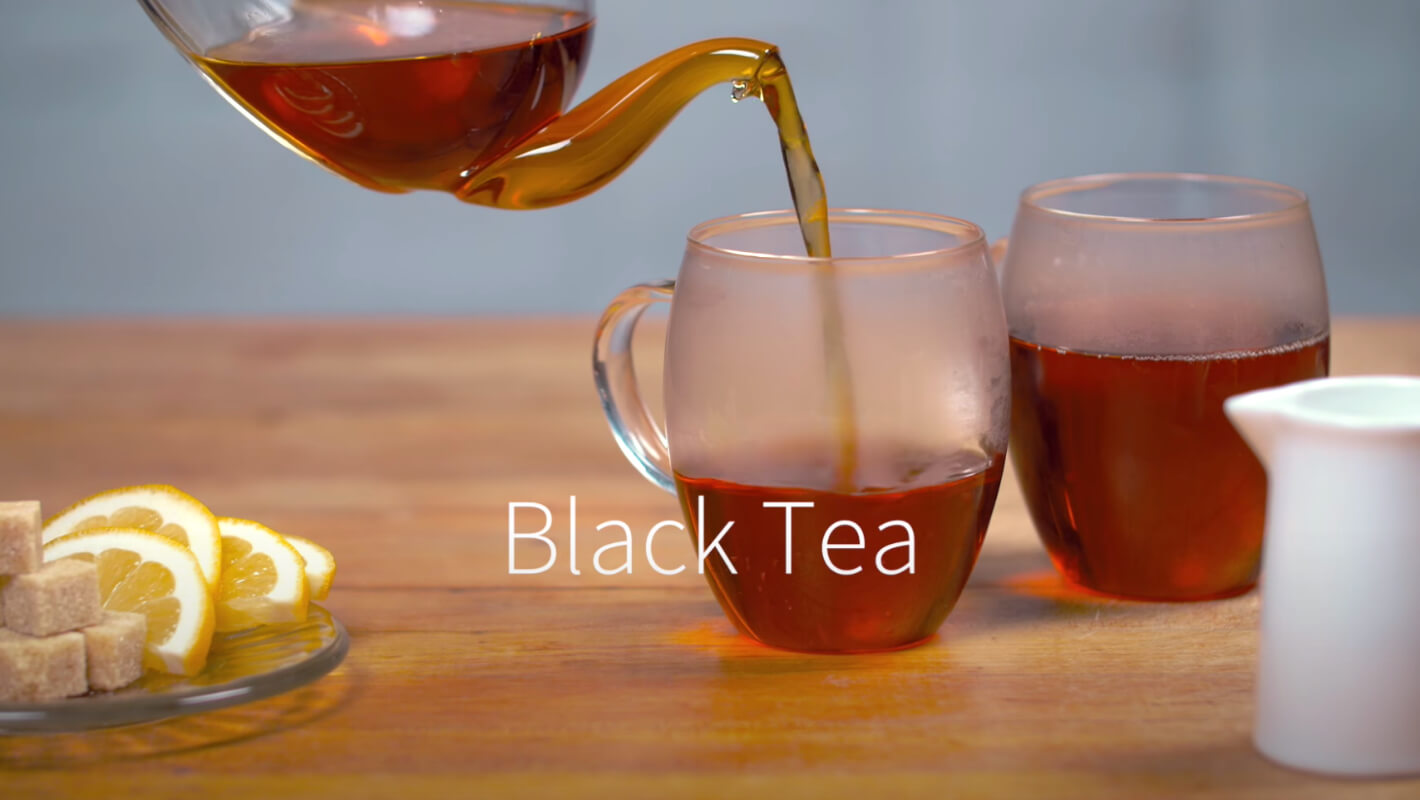
How to brew black tea
The flavor of black teas really runs the gamut. They can range from malty or smoky to fruity and sweet. Black teas range from mellow teas from China to full-bodied teas from Assam, India. There are malty teas, smoky teas and fruity teas, earthy teas, and honeyed teas. See the section below to dive more fully into the vast world of black teas.
1. Preheat a teapot by pouring boiling water into it, raising the temperature of the teapot to at least 180°
2. Discard the water. In your teapot or filter, add 1 teaspoon of loose tea for each cup of tea you’re brewing
3. Pour fresh boiling water over the tea or tea bag. This super-saturates the tea, allowing the perfect extraction of the flavor
4. Let the tea steep for a full 5 minutes.
5. Pour the tea through a strainer into the cups.
Black teas taste best when brewed between 205° and 212° Fahrenheit. Our wide offering of unique black tea blends results in different optimal temperatures, so it’s best to experiment to find the best temperature range. You can use electric water-dispensing pots to heat water to exact temperatures, or you can insert instant-read thermometers to check water temperature prior to pouring over your black tea leaves.
Black tea leaves should steep for at least 4-5 minutes, as a general rule. However, each batch and each drinker’s palate will dictate the proper brewing time. Observing both the tea liquor and body will help you gauge whether you have brewed your tea for the correct amount of time. If you’re looking for a stronger cup of tea, it’s best to increase the amount of tea used instead of increasing the brewing time.
What’s the Difference Between Black Tea and Green Tea?
While black teas and green teas originate from the same mother of all tea plants, Camellia sinensis, it is their distinctly different processing that makes them worlds apart. While black teas are oxidized, green teas are briefly cooked using either steam or dry heat. Just as the oxidation process gives black teas their flavors and colors, cooking the tea leaves fixes the green colors and more vegetal flavors.
Also, due to how green tea is processed, it retains more catechins than black tea and therefore more antioxidants. For more information about the wonderful world of green tea, read Everything You Want to Know About Green Tea!
How Should I Store My Black Tea?
Storing black tea is no different than storing all types of tea. Our tea tins are airtight, keeping out things tea doesn’t like such as moisture, oxygen, absorbable odors, and light. We’ve got all kinds of helpful tips for storing tea and keeping it fresh in our Does Tea Go Stale? blog post. When properly stored, black teas have a fairly long shelf life, certainly more so than some delicate green or white teas. In general, however, we recommend you drink your tea instead of keeping them tucked away in a tea cabinet — they’re made for enjoying!
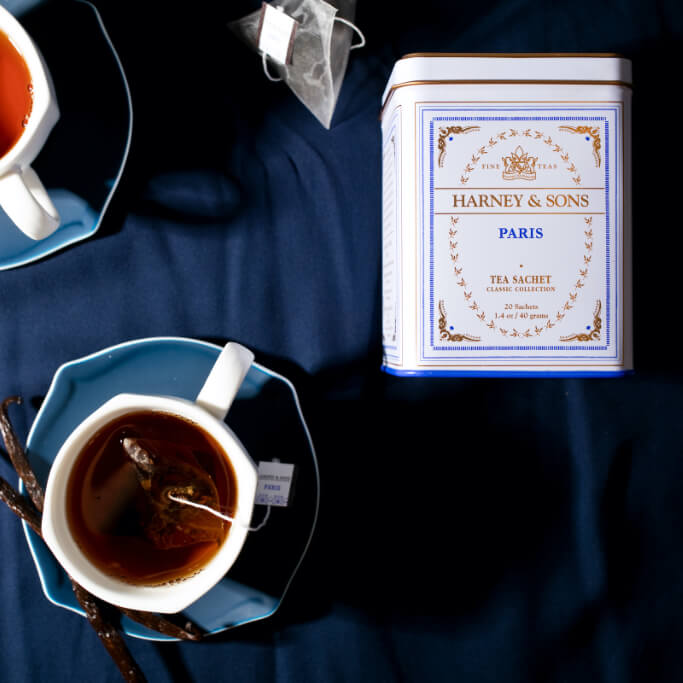
Black Tea Health Benefits
Black tea leaves should steep for at least 4-5 minutes, as a general rule. However, each batch and each drinker’s palate will dictate the proper brewing time. Observing both the tea liquor and body will help you gauge whether you have brewed your tea for the correct amount of time. If you’re looking for a stronger cup of tea, it’s best to increase the amount of tea used instead of increasing the brewing time.
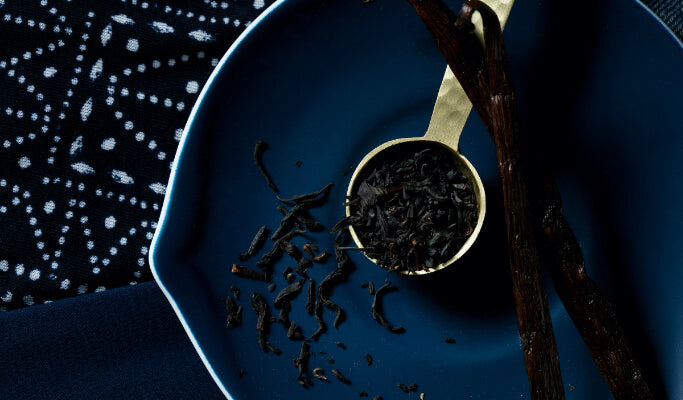
- Increase your antioxidant intake. Antioxidants are known properties in black tea, and they are well documented for a range of health benefits, including removing free radicals and helping reduce cell damage, decreasing inflammation, and more. Theaflavins and thearubigins are naturally occurring polyphenols and the main sources of antioxidants in black tea.
- May boost heart health. Research has shown that flavonoids, which are found in black tea, benefit heart health. Flavonoids are also found in fruits, vegetables, red wine, and dark chocolate. While anyone with heart issues should follow their doctor’s recommendations for their diet, a cup or two of black tea just may give your heart a helping hand. Keep the milk and sugar out of your cuppa, however, to make sure you’re not counteracting any possible health benefits with added fats and sugars.
- Can help with digestion. Black tea is teeming with tannins and other chemicals that can have a relaxing effect on the body’s digestive system.
- It can reduce stress. Drinking black tea does this in two ways: first, it contains L-theanine, an amino acid found in green and black teas as well as mushrooms. In studies, L-theanine has been found to be a mood lifter. The other way tea reduces stress? Many people report the process of simply making a cup of tea is calming. It allows us to step away from whatever we’ve been doing, breath, and slow down. Have you ever seen anyone drink a cup of tea who looked stressed?
Does Black Tea Stain Teeth?
The truth is that, yes, black tea can stain your teeth. Because it has acidic properties as well as tannins — plant-based compounds that make it easier for stains to stick to teeth — black tea is actually a worse culprit at staining teeth than coffee. We cannot lie.
However, the good news is that you are completely in charge of whether tea stains your teeth. Obviously, brushing at least twice a day is recommended and incredibly helpful in fighting stains. If you are highly concerned, brushing immediately after drinking black tea is a great way to keep those stains at bay. You can also drink water after having tea to help flush the tannins off your enamel. And, of course, utilizing stain-fighting toothpastes or talking to your dentist about whitening are also options if you’ve been drinking tea, coffee, red wine, etc. for years and would like to have a brighter smile.
Overall, the many benefits of tea outweigh their potential for staining teeth, which can be avoided with good dental hygiene. And that is all the dental advice we have for today, folks!
How Much Black Tea Is Safe to Drink?
There are no guidelines on how much black tea is too much, so as in everything moderation is always a good rule to follow. If you are drinking caffeinated black tea, however, or any caffeinated beverage, you should keep an eye on how much caffeine you’re ingesting, especially if you have blood pressure concerns. However, if you want to reap the benefits of black tea, having two or more cups a day should be an absolutely excellent practice to engage in. If you add in milk and/or sugar, be mindful of the extra fat and sugars that you are taking in.
While there is no reason pregnant women should be concerned about drinking black tea, they may want to be mindful of caffeine levels. We always recommend checking with your doctor about drinking caffeine during pregnancy.
Black Tea Recipes
It’s time to take black tea out of the pantry for more than enjoying it in a teacup! Discover recipes that allow you to incorporate black tea into some delicious beverages and food to share with and delight your friends.
Tea-Smoked Five-Spice Salmon

Ingredients:
Salmon:
- 2-4 pieces salmon (preferably thick pieces)
- 4-6 baby bok choy (2-3 per person)
- Garnish: chili threads (optional) or chopped scallions
Marinade:
- 4 cloves garlic, whole
- 3 T fresh ginger, sliced
- 2 t Five Spice (store-bought or make your own - to the right)
- ¼ C olive oil
- 5 T soy sauce
- 3 T brown sugar
- 1 orange (¼ C fresh orange juice and zest, divided)
Tea-Smoking Ingredients:
- 3 T rice
- 2 T loose tea leaves (a strong black tea is preferred)
- 2 T sugar
- 2 star anise, broken (optional)
- 2 dry red chilies (optional)
Five Spice Recipe (if you make your own):
- 2-inch cinnamon stick
- 2 t whole cloves
- 2 t fennel seed
- 2 whole star anises
- 2 t szechuan peppercorns
Toast all in a skillet over medium heat until just fragrant, 1-2 minutes only. Grind in a coffee grinder until smooth.
Directions:
Salmon:
- Make the marinade. Blend all of the marinade ingredients in a blender until smooth, reserving ½ of the zest for garnish. Set aside 3 T of marinade for the bok choy.
- Place the salmon and rest of the marinade in a ziplock bag and marinate 1 hour or overnight.
- Turn oven to broil.
- Prepare wok for smoking. (A wok works best, or use a deep saute pan or pot with a lid.) You will need a vegetable steamer basket or rack that fits in the wok.
- Line the wok with 4 layers of foil. Take a large piece of foil and fold in half, then in half again so you have an 8-inch square, four layers thick. Place foil in the bottom of the wok. In a small bowl, mix smoking ingredients together in a bowl and place in the wok, spreading it out to about 4 inches in diameter. Place a rack or steamer over the tea/rice mix, so it sits above and is not directly touching. You want space for the smoke to circulate.
Tea-Smoking Ingredients:
- Prep the bok choy by quartering.
- Take the salmon out of the marinade, blotting the bottom side of the salmon only on a paper towel, then place the salmon on the vegetable steam so they are not touching each other the edges of the wok. Cover the wok with foil, then the lid. Place the wok on high heat for 2-3 minutes until you begin to see little puffs of smoke. Once you see smoke, turn the heat down to medium for 2-3 minutes, then medium low for 5 minutes. (2 pieces of 1 ½-inch thick salmon cooked to medium in about 8 minutes.) Then caramelize the top of the salmon by either placing it under the broiler for a minute or two, or use a chef’s torch, and set aside or in a warm oven.
- Heat oil in a wok or skillet over medium-high heat, and when hot, add baby bok choy, turning occasionally, until wilted, about 4 minutes. Add a couple tablespoons of the reserved fish marinade, tossing to coat, letting the marinade cook, and reduce slightly. Make a bed of bok choy, top with salmon, garnish with orange zest, chopped scallions, cracked pepper, and chili threads (optional).
Source: Feasting At Home
And now you know that black tea is way more than just that cup of brown liquid you’ve been drinking for years! No more taking black tea for granted! Hope you’ve enjoyed learning about black tea, where it comes from, how it’s made, why it’s good for you, and the interesting things you can do with it besides brew it. Here’s to our loyal companion, black tea!
